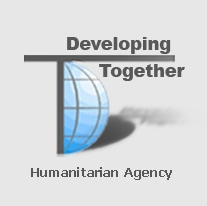LINC recently interviewed Driton Tafallari, Executive Director of Developing Together (DT), on the challenges facing local NGOs in Kosovo. DT was established in January 2004 in Pristina with the support of the international NGO, GOAL Ireland and focused on improving living conditions in the poorest communities in Kosovo.
Below are some highlights from our interview:
LINC: Why did DT initially form?
Driton: Before GOAL closed its Kosovo mission in 2005, they wanted to ensure the sustainability of their work and create an organization with the same spirit and culture that GOAL had brought to Kosovo. DT’s key staff all worked with GOAL in the past and DT was established by the former managers of GOAL Kosovo. Beyond GOAL’s direct assistance in establishment of the organization, GOAL provided coaching and capacity building. DT is now managed by staff who developed their skills and gained their experience in the GOAL culture of getting the job done.
There are two main reasons for DT’s creation:
- There were clear and urgent needs in the field. After the war in Kosovo there were about 120,000 buildings partly or completely damaged (approximately 40% of all buildings in Kosovo). Most DT staff are engineers and we felt that our role in rebuilding was important. After this period of “rebuilding Kosovo” which lasted approximately until 2004, a new era began with the return and reintegration of minorities. This phase is still ongoing and DT is a very important partner in Kosovo for this work.
- Compared with other INGO’s, GOAL had a different approach to its local staff. It did not consider us only as “employees” and send us in the field to do the job but GOAL let us be part of the organization. As such we, as local staff, were involved in the planning phases, budget preparation, etc. So we could define the NGO ourselves, which was so important for the successful creation of DT. In one word, we did not want to let the experience melt.
LINC: What is DT working on now?
Driton: At the moment, we are involved primarily in assisting the minority return process. The return of minorities to Kosovo – Serbs and Roma – is still a very sensitive issue. Just a couple of years ago, the main challenge for minority returnees was the perception of a lack of security. The latest research now says that the main returnee concern is their economic security.
DT is currently working with three partners: UNHCR, the British Embassy and IOM. Our role is focused on technical activities related to provision of shelter and infrastructure support. Also, based on our analysis of the needs on the ground, DT provides minor income generation materials and is beginning to engage more in education – mostly assisting VET schools. In this area, we are even doing some voluntary activities while we seek targeted funding from donors.
We are very proud of the work we are doing with minorities. Many of us Albanians hesitate to get involved – the tension between Albanians and Serbs is still very high.
LINC: What are the biggest challenges for the sustainability of DT’s impact as a national NGO in Kosovo?
Driton: Running a local NGO in Kosovo is very difficult. We have the freedom to implement a wide range of activities with no threats regardless of the type of activity. However, the main problem is funding for NGOs. Immediately after the war, 15 years ago, opportunities for NGO funding was abundant and international presence was very high. As a result a lot of “Local NGOs” were created. At the moment, there are about 7,000 registered LNGO’s which for a small country like Kosovo is too many. However based on some research, only about 5% are currently operational. This is because of the lack of funding opportunities since the needs in the field are obvious.
In the developed world there are three primary sources of funding: Government, philanthropic funds and international donors (e.g., USAID, UN agencies). In Kosovo, the only functioning way to get funds for projects is the third option – international donors. To make matters worse, the number of these international donors is shrinking every day, which is another constraint. So, now only well-prepared, experienced NGOs can survive and most, probably a lot of smaller local NGOs, will disappear.
LINC: If you had the resources to do so, what internal activities would you conduct to adapt, learn and improve?
Driton: One of the main concerns for local or national NGOs is difficulty of developing good project proposals. Since the competition is stronger every day and the resources available are decreasing in Kosovo, local NGOs are competing among each other, and sometimes even with International NGOs (e.g., Mercy Corps, IOM). At the moment one of the biggest donors for local NGOs in Kosovo is the European Union Office in Kosovo (EUOK) through several established instruments. In the last EUOK call for proposals about 130 local NGOs competed for 10 grants, which tells how difficult it is to obtain project funding these days. So, DT would seek assistance to further improve our project development (and project proposal writing) in order to be able to compete in this increasingly competitive environment.
